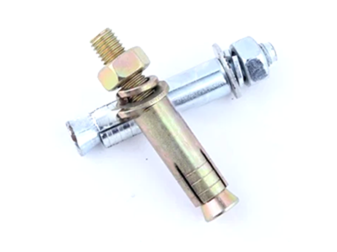Nov . 13, 2024 11:15 Back to list
3 way beam clamp
Understanding the 3-Way Beam Clamp Applications, Benefits, and Installation
In industrial settings, effective and secure connections between beams are crucial for structural integrity and safety. One of the most innovative solutions for achieving these connections is the 3-way beam clamp. This versatile tool has gained popularity across various industries, including construction, manufacturing, and maintenance. In this article, we will explore what a 3-way beam clamp is, its applications, benefits, and installation process.
What is a 3-Way Beam Clamp?
A 3-way beam clamp is a mechanical device designed to connect three different beams at right angles to each other. Typically made from high-strength steel or other robust materials, these clamps allow for the secure attachment of beams without the need for welding or drilling. The design generally includes a clamping mechanism that ensures a tight grip, which minimizes the risk of any movement over time.
Applications of 3-Way Beam Clamps
3-way beam clamps are utilized in various applications, including
1. Manufacturing Facilities In factories where heavy machinery and equipment need to be suspended from overhead beams, 3-way beam clamps provide a reliable method of securing these loads. They are particularly useful for hanging processes such as assembly lines and conveyor systems.
2. Construction Sites During the erection of buildings, these clamps facilitate the quick assembly of steel frameworks. Workers can easily attach beams at necessary angles without extensive preparation, accelerating the building process.
3. Event Setup In the events industry, 3-way beam clamps are used to support lighting rigs, trussing, and sound systems. Their ability to connect multiple beams ensures that equipment is both stable and safe for large audiences.
4. Maintenance and Repair For maintenance tasks that require temporary beam connections or suspensions, these clamps offer a quick solution that can easily be adjusted or removed as needed.
Benefits of Using 3-Way Beam Clamps
The use of 3-way beam clamps comes with several advantages
1. Speed and Efficiency Installation is notably quicker than traditional methods like welding, as it eliminates the need for specialized tools and extensive preparations. This efficiency can significantly reduce labor costs and project timelines.
3 way beam clamp

2. Versatility The capability to connect beams at various angles makes these clamps an adaptable solution for numerous projects. They can be used in different configurations based on specific requirements.
3. Strength and Stability Fabricated from durable materials, 3-way beam clamps provide robust strength and stability, ensuring that beams remain securely in place under load.
4. No Damage to Structure Unlike welding or drilling, which can compromise the integrity of beams, the use of clamps leaves the parent materials unharmed. This is particularly advantageous in situations where structural integrity must be maintained.
5. Reusability Many 3-way beam clamps are designed for easy disassembly, allowing them to be reused in different projects. This further contributes to cost savings and reduces waste.
Installation Process
Installing a 3-way beam clamp is relatively straightforward
1. Preparation Begin by ensuring that all necessary equipment is on hand, including the clamp, a wrench, and any required safety gear.
2. Positioning Align the beams that need to be connected. Ensure that they are level and at the desired angles to each other.
3. Clamping Position the 3-way beam clamp around the beams. Adjust the clamp so that it fits snugly around each beam.
4. Securing Using the wrench, tighten the bolts or screws on the clamp until it is securely fastened. Ensure that the connection is firm but avoid overtightening, which could damage the clamp or the beams.
5. Final Inspection After installation, conduct a thorough inspection to ensure everything is securely attached and that there are no gaps between the clamp and the beams.
In conclusion, the 3-way beam clamp is an essential tool in various industries due to its strength, versatility, and ease of use. By facilitating quick and secure connections, it plays a vital role in ensuring the safety and efficiency of numerous applications, from manufacturing and construction to event setup and maintenance. As industries continue to evolve, the use of such innovative solutions will remain crucial for achieving structural integrity and operational excellence.


